Somewhere Along the South Cape Bay Track
If you look down for long enough when walking towards the Southern Ocean, you’ll likely see tiny orchids beside the track. Single flowers sit boldly atop threadlike stalks a few centimetres above the ground. One type has two pinkish white, leaf-shaped petals invitingly splayed below its wide-open reproductive parts, beckoning some even tinier pollinator to enter please, and help me make babies. Its fabulous name is Eriochilus cucullatus.
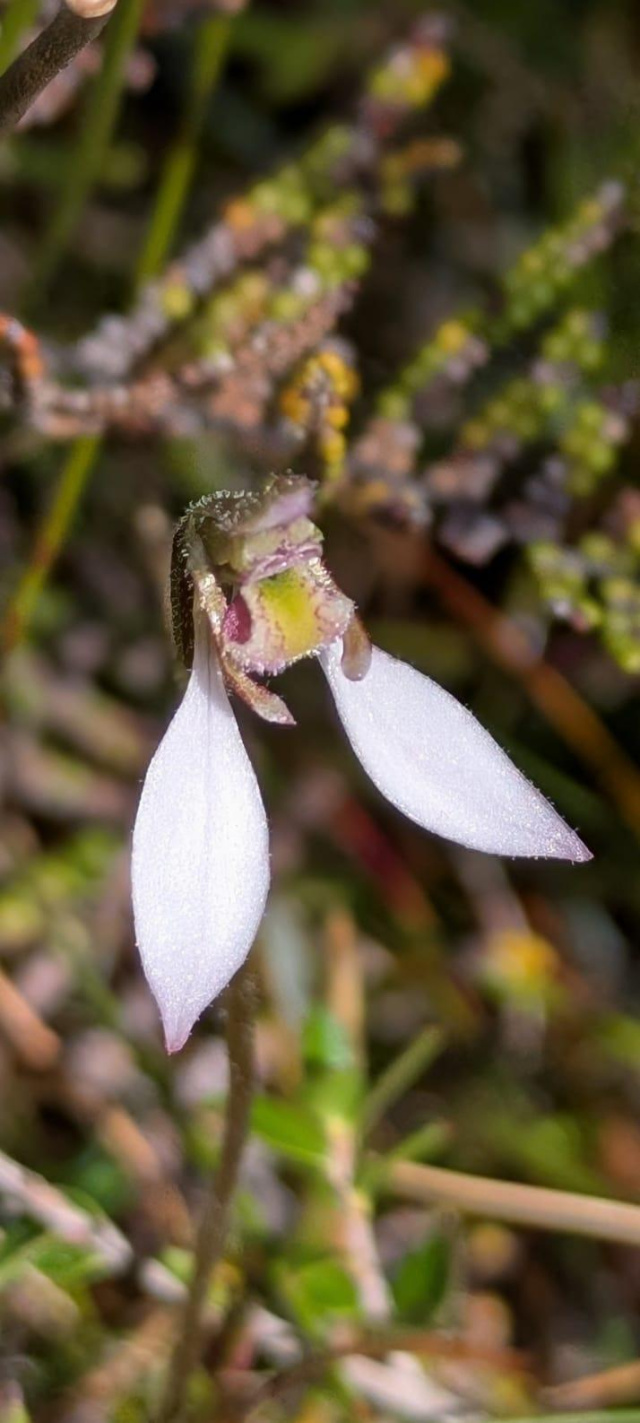
The flower is peculiar, a greenish reddish tongue lolls rather disgustingly beneath a coy greenish reddish hoodish arrangement gently covering the delicate reproductive bits. On the tongue are black globules. In this moment of joy and wonder I meet Chiloglottis reflexa, an autumn bird orchid.
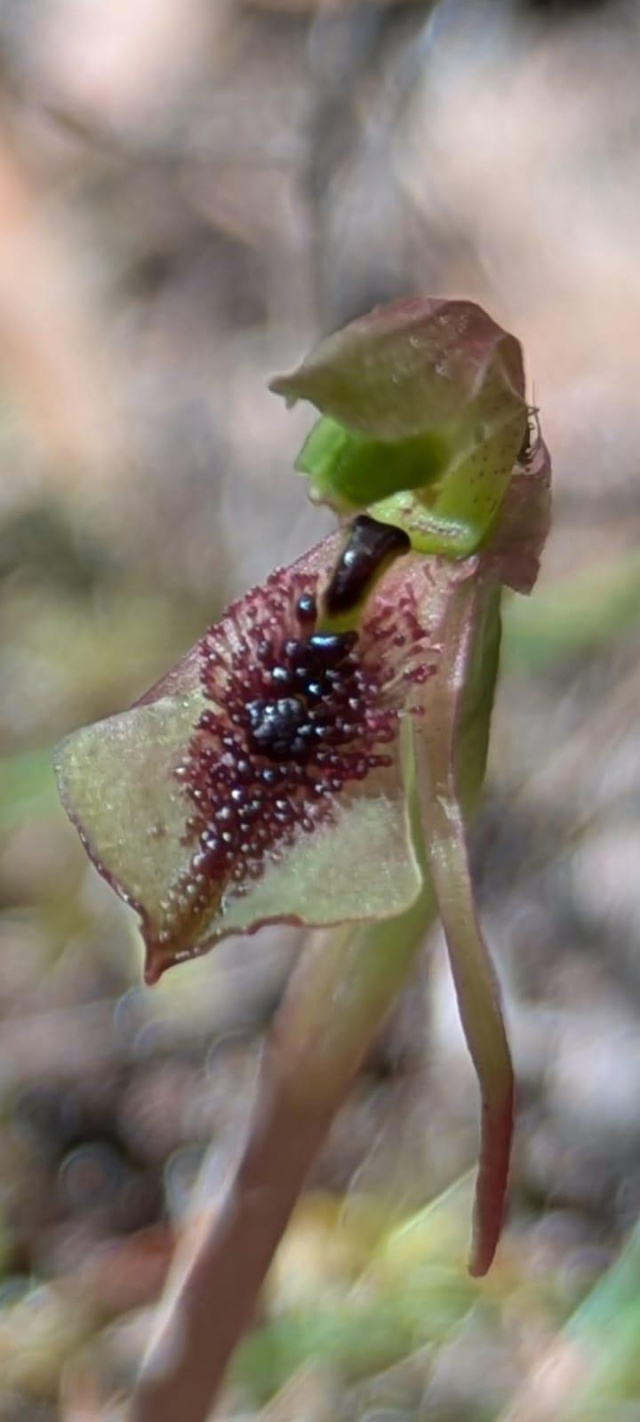
Gazing up somewhere along the way, I strain to see the top of a giant, its branches spreading into the sky, its leaves sucking up water from the peaty soil. A tree is a giant straw filled with wood instead of air.
Whoa, what’s that?! One day in past times, a giant fell to earth, it’s time of standing sentinel complete. Beside the track its massive, wounded root mass has been softly shrouded in lumpy green clouds of moss and fern and fungi. The base of this good old Eucalypt on its side towers above us, some three metres of life growing on the woody carcass. The immensity of trunk lies dead and hidden in the undergrowth. I can’t see it at all.
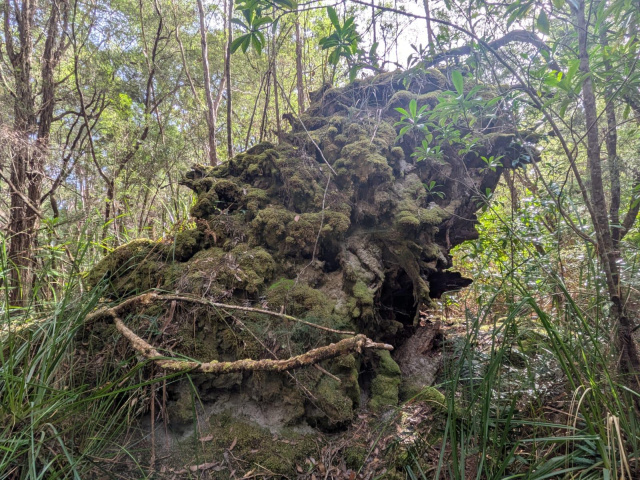
I can’t describe it, so here’s the picture. Everything about it is exquisite and unique. I want one at home in my garden, but how can I? Such miraculous things are wild and free.
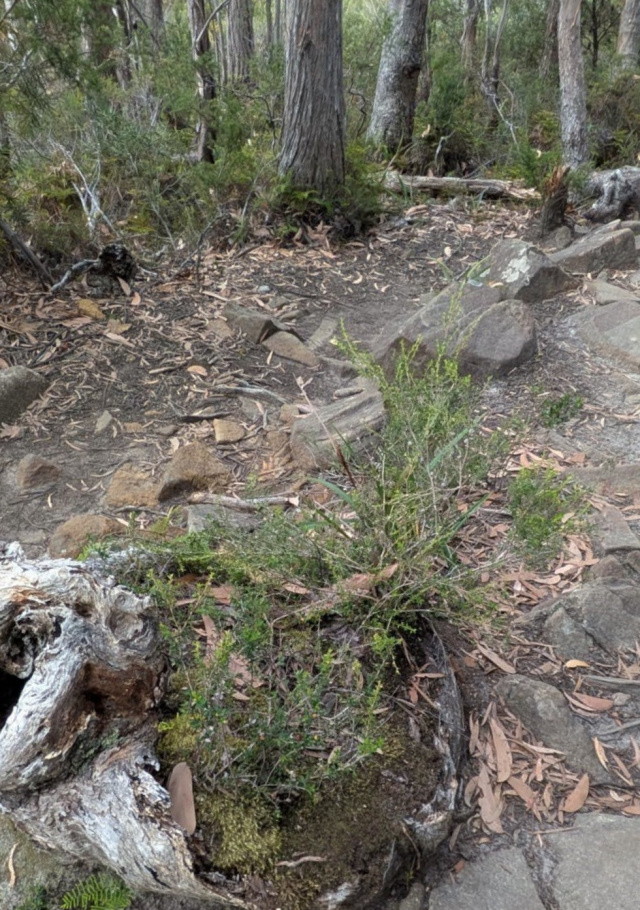
Tramping on, the boots feeling 10km heavier, I raise my eyes and there in a window of shrubbery is the deep blue of the heaving ocean. It’s so cooling, just seeing it is cooling. Rounding the corner, wham, there’s the whole thing! The Southern Ocean making landfall at South Cape Bay, a celebration in waves of white foam dumping, rushing, roaring and flowering on the patient sandy seashore. The ever-welcoming seashore, shapeshifting in surrender to the vagrant waters. Whale-like, the mighty, eternally restless, churning seas roll in and out. The sand is there, the sand and rocks are always there for them.
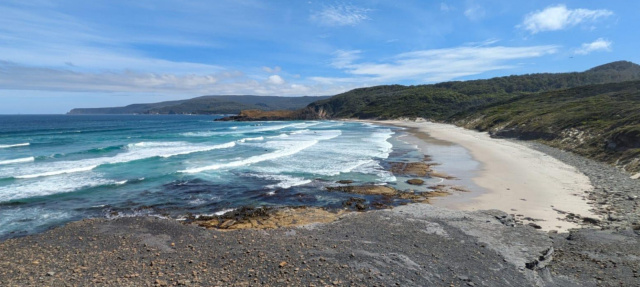
The emerging skeleton of a seal is revealed, its white rib bones poking from smelly fleshy remains.
Rockpools are universes I wish I had more time to dive into. I wish I was staying here. I would strip off and wallow in a plunge pool/spa I have discovered. The big seas wash in and out of a channel which pours into a rectangular pool at the water’s edge. Water that has known ice bergs and penguins. Water that has known blue whales and strange deep-sea things. Would that this water could know me.
Back at our Cockle Creek campsite, boots kicked off, there are sandy patches betwixt the Poa clumps. The soil surface is abuzz with feral and native wasps and bees. Air traffic at ground level is maximum, never colliding but constantly moving, hovering, manoeuvring. Again, the native bees and wasps are there, guarding perfectly circular doorways into tiny dark earth tunnels. These carefully constructed homes are for solitary individuals who need little for their little lives but collectively give a lot to our ecology. We sit on our folding stools and watch them for ages, engaging with their habits and sharing some time.
The winds blow onshore. Washed up kelp forests flop and flail in the shallows, then strand on the beach at high tide, making superb, curvy, leathery, abstract organic sculptures of infinite beauty...
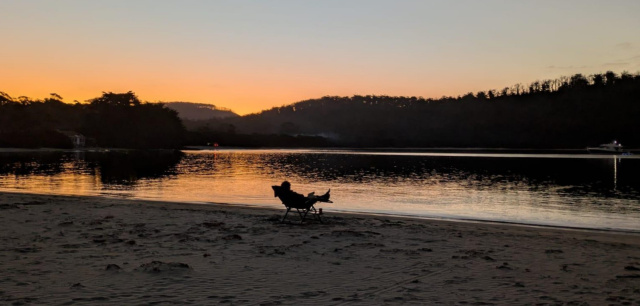
Walking in the other direction, around the corner from a peopled lookout I find a bath-tub bay where the water is quiet and secret. I strip off and slide around horizontally in the waters, to be out of sight. I let the current float me in and out and here and there. This is all I want, to merge into the wetness like seaweed and drift. I have all that I want.
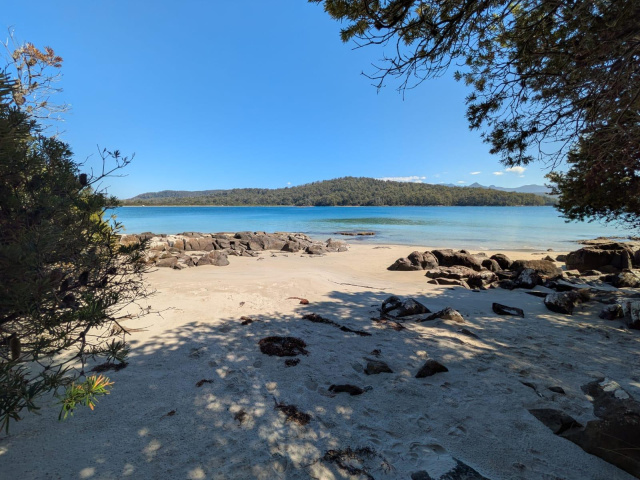
The footpaths are like stepping stones of broken concrete. Normal, so ignored. One night out walking I stepped over electrical wires draped and dangling at ankle height across a corner. Normal, so ignored. No one seems to care, no one seems to notice, and yet there are 14 million people who could be caring, noticing. The setting sun is a red disc in the smog-laden air. The full moon coughs as it rises. The stars are few and pale. The heavens are suffocating.
Great world you are a wonder of contrasts. Tiny orchids and blue whales hold on, because there is no Planet B.
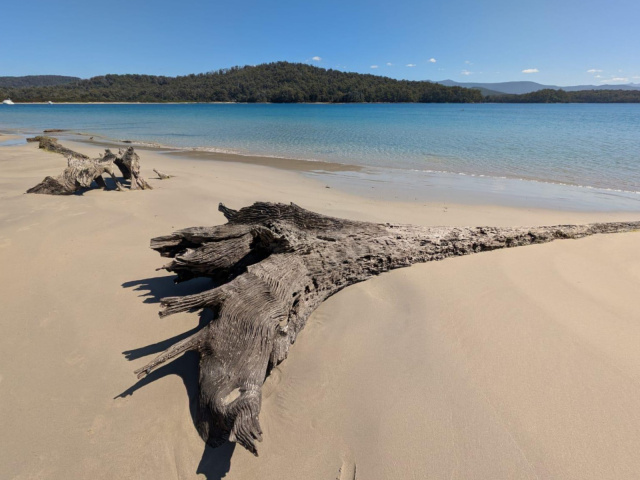
Great world you are a wonder of contrasts. Tiny orchids and blue whales hold on, because there is no Planet B.
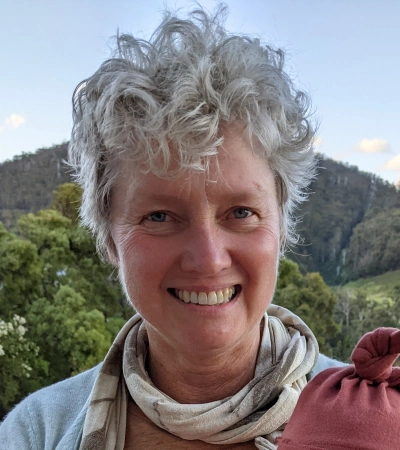
Helen Cushing
Freerange Journalist
If you look down for long enough when walking towards the Southern Ocean, you’ll likely see tiny orchids beside the track. Single flowers sit boldly atop threadlike stalks a few centimetres above the ground. One type has two pinkish white, leaf-shaped petals invitingly splayed below its wide-open reproductive parts, beckoning some even tinier pollinator to enter please, and help me make babies. Its fabulous name is Eriochilus cucullatus.

The flower is peculiar, a greenish reddish tongue lolls rather disgustingly beneath a coy greenish reddish hoodish arrangement gently covering the delicate reproductive bits. On the tongue are black globules. In this moment of joy and wonder I meet Chiloglottis reflexa, an autumn bird orchid.

Gazing up somewhere along the way, I strain to see the top of a giant, its branches spreading into the sky, its leaves sucking up water from the peaty soil. A tree is a giant straw filled with wood instead of air.
Whoa, what’s that?! One day in past times, a giant fell to earth, it’s time of standing sentinel complete. Beside the track its massive, wounded root mass has been softly shrouded in lumpy green clouds of moss and fern and fungi. The base of this good old Eucalypt on its side towers above us, some three metres of life growing on the woody carcass. The immensity of trunk lies dead and hidden in the undergrowth. I can’t see it at all.

I can’t describe it, so here’s the picture. Everything about it is exquisite and unique. I want one at home in my garden, but how can I? Such miraculous things are wild and free.

Tramping on, the boots feeling 10km heavier, I raise my eyes and there in a window of shrubbery is the deep blue of the heaving ocean. It’s so cooling, just seeing it is cooling. Rounding the corner, wham, there’s the whole thing! The Southern Ocean making landfall at South Cape Bay, a celebration in waves of white foam dumping, rushing, roaring and flowering on the patient sandy seashore. The ever-welcoming seashore, shapeshifting in surrender to the vagrant waters. Whale-like, the mighty, eternally restless, churning seas roll in and out. The sand is there, the sand and rocks are always there for them.

The emerging skeleton of a seal is revealed, its white rib bones poking from smelly fleshy remains.
Rockpools are universes I wish I had more time to dive into. I wish I was staying here. I would strip off and wallow in a plunge pool/spa I have discovered. The big seas wash in and out of a channel which pours into a rectangular pool at the water’s edge. Water that has known ice bergs and penguins. Water that has known blue whales and strange deep-sea things. Would that this water could know me.
Back at our Cockle Creek campsite, boots kicked off, there are sandy patches betwixt the Poa clumps. The soil surface is abuzz with feral and native wasps and bees. Air traffic at ground level is maximum, never colliding but constantly moving, hovering, manoeuvring. Again, the native bees and wasps are there, guarding perfectly circular doorways into tiny dark earth tunnels. These carefully constructed homes are for solitary individuals who need little for their little lives but collectively give a lot to our ecology. We sit on our folding stools and watch them for ages, engaging with their habits and sharing some time.
The winds blow onshore. Washed up kelp forests flop and flail in the shallows, then strand on the beach at high tide, making superb, curvy, leathery, abstract organic sculptures of infinite beauty...

Walking in the other direction, around the corner from a peopled lookout I find a bath-tub bay where the water is quiet and secret. I strip off and slide around horizontally in the waters, to be out of sight. I let the current float me in and out and here and there. This is all I want, to merge into the wetness like seaweed and drift. I have all that I want.

The footpaths are like stepping stones of broken concrete. Normal, so ignored. One night out walking I stepped over electrical wires draped and dangling at ankle height across a corner. Normal, so ignored. No one seems to care, no one seems to notice, and yet there are 14 million people who could be caring, noticing. The setting sun is a red disc in the smog-laden air. The full moon coughs as it rises. The stars are few and pale. The heavens are suffocating.
Great world you are a wonder of contrasts. Tiny orchids and blue whales hold on, because there is no Planet B.

Great world you are a wonder of contrasts. Tiny orchids and blue whales hold on, because there is no Planet B.
You might like...
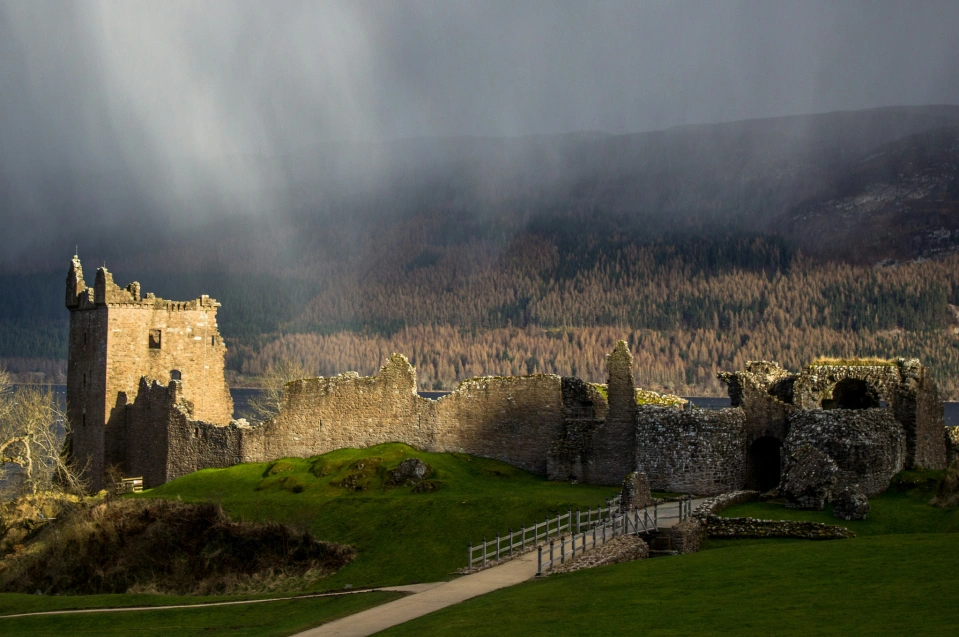
From Loch Ness to South Bruny Island
Southwest National Park, Tasmania
Southwest National Park in Tasmania is a vast, mostly trackless wilderness containing ancient forests, the wildest rivers, a glaciated and mountainous landscape and a spectacular coastline with rich aboriginal history.

Albatross: a life at sea

The Story of Kowai Bush and the Mears Track
Newsletter
Sign up to keep in touch with articles, updates, events or news from Kuno, your platform for nature
